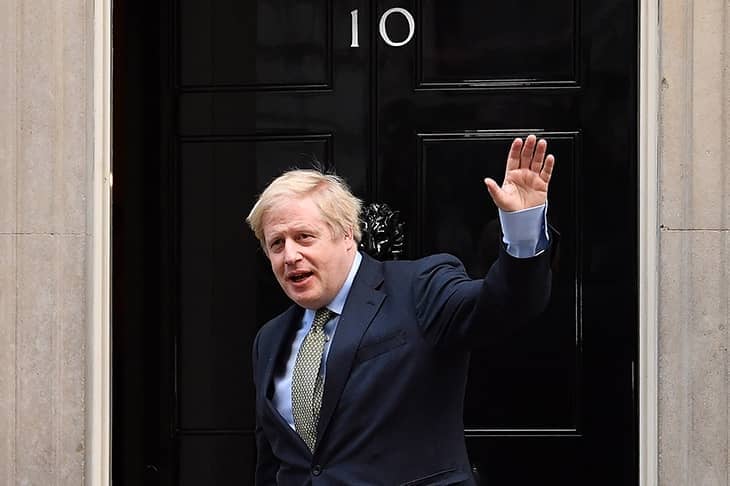In answers to questions following his statement in the Commons on Monday, Boris Johnson let drop an interesting statistic. He said that, ‘on busy days’, more than 400 officials work in 10 Downing Street. This figure explains a lot — why so many staff there got Covid, why, after long hours in overcrowded conditions, they might want to open bottles of wine, why factions struggle for mastery and leak against each other, and why the heart of government suffers from clogged arteries. With 400 rabbits in that warren, how can most of them know the Prime Minister personally, how can they feel much esprit de corps? The numbers are four times bigger than they were 30 years ago, to little visible benefit. In her report, Sue Gray says:
The number of staff working in 10 Downing Street has steadily increased in recent years. In terms of size, scale and range of responsibility it is now more akin to a small government department than purely a dedicated Prime Minister’s office. The structures that support the smooth operation of Downing Street, however, have not evolved sufficiently to meet the demands of this expansion. The leadership structures are fragmented and complicated and this has sometimes led to the blurring of lines of accountability. Too much responsibility and expectation is placed on the senior official whose principal function is the direct support of the Prime Minister. This should be addressed as a matter of priority.
She is right in her assessment, but officials and politicians immediately devise the wrong remedy. In his Commons statement, Boris promised the creation of an Office of the Prime Minister, with a permanent secretary to head it. That would only compound the problem, because it would further disempower cabinet ministers, making the Prime Minister even more of a chief executive. No one rising to the top of British parliamentary politics (least of all Boris) is likely to be suitable or trained for such a role. The government of a country is not like that of a public limited company, and cannot be. Even if a prime minister were a well-trained chief executive, colleagues would become heavily invested in his failure because his job would curtail their constitutional powers. The great illusion is that a prime minister can or should exercise complete control over the government he leads. No, prime ministers should exercise authority, which is a different thing.
The first page of Sue Gray’s report says: ‘This page intentionally blank.’ Not just the first page, I’d say.
My friend the frontline doctor says the main problem about getting the NHS back to normal as Covid lifts is ‘the now-embedded Covid culture of the management class at local level’. This can include GPs. One example the doctor gives is the case of a friend’s infant daughter whom the GP would not see indoors because she had had no PCR test. She was very unwell. Her father was told to take her to a freezing car park for a swab, and had to wait 48 hours for the result, while she became iller. She eventually saw the GP 72 hours after the appointment was first requested, by which time she was septic with severe tonsillitis that came close to obstructing her airway. As his friend said: ‘We are now in a world where if my daughter is ill I have to prove she is not ill before the doctor will see her.’
Before Covid, a masked ball was a glamorous thing — mysterious, fashionable, dangerous, erotic. In Verdi’s opera of that name, it even involved murder. Now the virus has reduced masks to the dismally medical. The next big social success will belong to the first person brave enough to give an unmasked ball.
The late Frank Longford, doughty campaigner for many in prison, used to say that he was drawn to those who suffer what he called ‘the hiss of the world’. It is a good phrase and a good instinct (though I must say I did not share Frank’s admiration for Myra Hindley). In the age of social media, the hiss of the world has got much louder and much more instantly global, damaging justice everywhere. All the more reason to stick up for its victims, such as the many accused of child abuse on no clear evidence, or people who simply seem unappealing, such as the Duke of York.
One of the pleasures of long winter nights is the hooting of owls. Round our house in the country, the noise is amazing at present. It is a hoot moot. As Wordsworth more poetically put it, shouts ‘with quivering peals,/ And long halloos, and screams, and echoes loud/ Redoubled and redoubled; concourse wild/ Of jocund din!’. It feels as if the relative lack of traffic during Covid has increased owl numbers. It has certainly turned up the volume of sound. Most bird calls relate to the claims of sexual intercourse or property, and I get the distinct sense that the competition over both has been hotting up as hoots issue from all corners of our garden. Contrary to widespread belief, it is tawny owls, not barn owls, that hoot. The males make most of the noise. The female’s ‘contact call’ is the cry ‘keewik’. The website of the British Trust for Ornithology says: ‘Females may very occasionally hoot, this being less well phrased than that of the male.’ How long before that remark is cancelled for sexism?
Each year, the editor kindly lets me use this space to advertise the annual general meeting of the Rectory Society, the fan club for existing and former clergy dwellings which I founded and chair. Spectator readers should be particularly interested this year, because the guest of honour is our columnist Matthew Parris. I was inspired to invite him after his article in the Times headlined ‘Anglicanism was never really about God’. Matthew will be interviewed by me in the church of St Bartholomew the Less, Smithfield, on Tuesday 1 March. Doors open at 6 p.m. Proceedings start at 6.30 p.m. Tickets for non-members cost £20. Those interested should apply to Alison Everington at ali@everington.net.







Comments